As the final whistle blew at the Stadion An der Alten Försterei, cheers of joy and elation rang out from the stands and into the warm May night. Union Berlin had managed to hold off Stuttgart 0-0 (2-2 agg.) at home to seal promotion to the Bundesliga for the first time in the club’s illustrious history.
After going unbeaten in six of their final seven matches of the season to maintain their promotion/relegation playoff spot, Union Berlin will become just the sixth team from the former East Germany ever to play in the Bundesliga. They round out the promoted clubs, joining FC Köln and SC Paderborn, both who have been in the Bundesliga in recent seasons. This tactical analysis scout report will work as a season preview for Union Berlin’s maiden season in the top flight.
Urs Fischer’s tactical philosophy
Manager Urs Fischer will be leading Union Berlin in the Bundesliga this season. The former Swiss centre-back began coaching the club in June 2018, after last managing FC Basel to two Swiss Super League titles and one Swiss Cup title in two seasons.
Last season, Fischer implemented a high front press out of possession with a high defensive line. The attacking players push forward to create pressure on the opposing backline while closing off passing outlets.
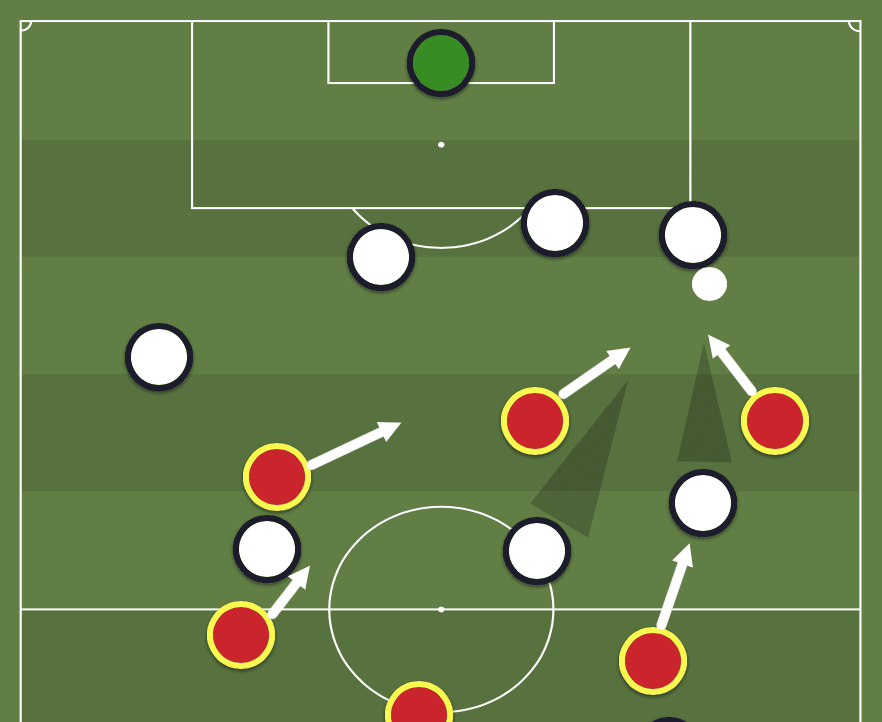
Attacks quickly follow as a result of the pressure. Chance creations in this 4-3-3 based system occur quickly and directly to prevent the backline from reorganising in time to defend.
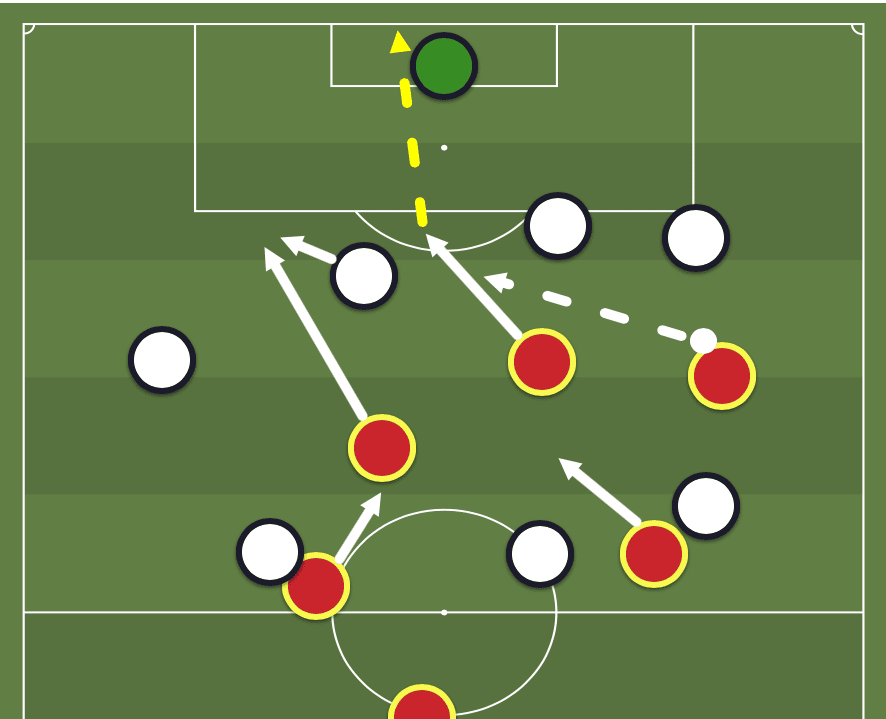
These tactical principles are basic pressing tactics which can be highly volatile when used correctly. Whether Fischer chooses to continue using this system in the first division or not, it has the potential to disrupt superior opposition. First, we will take a look at the high press.
High press
With a former defender as their manager, it is no surprise that Union Berlin thrived defensively last season in the 2. Bundesliga. They led the league considerably in goals conceded, allowing only 33 goals in 34 matches, nine fewer than fourth-place Hamburg. They also only made three individual errors leading to goal throughout the entirety of last season. Keeper Rafał Gikiewicz stood atop the clean sheet rankings with 14. This strong defending played a major part in Union Berlin’s promotion campaign, resulting in a league-low of five losses, all of which came after the first 17 matches of the season.
The primary device in Fischer’s defensive system is a front press.
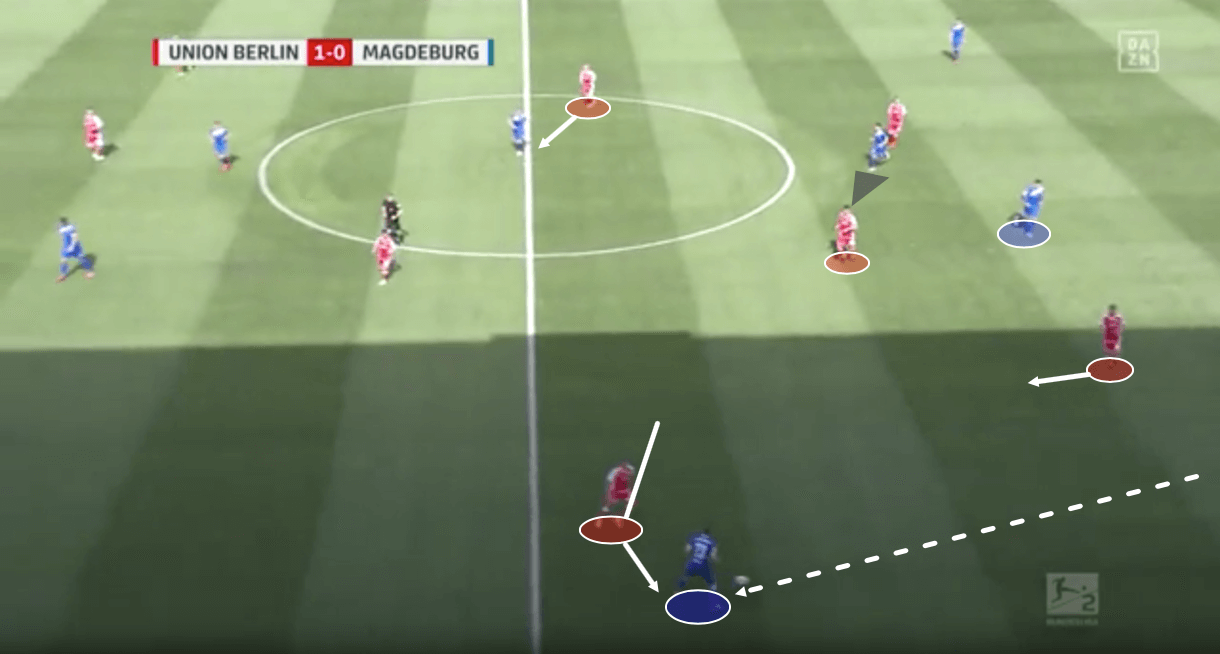
In the sequence above, Magdeburg possesses the ball on Union Berlin’s right touchline. The wide midfielder Grischa Prömel first shapes his run to cut off a diagonal pass inside, then presses the ball. Union Berlin players around other Magdeburg players press or mark the opposition by anticipating movements or passes and blocking passing lanes.
While the press has been effective for Union Berlin, it does come at a risk. The high line played defensively occasionally led to open space around the backline. This can be notably vulnerable to counter-attacks.
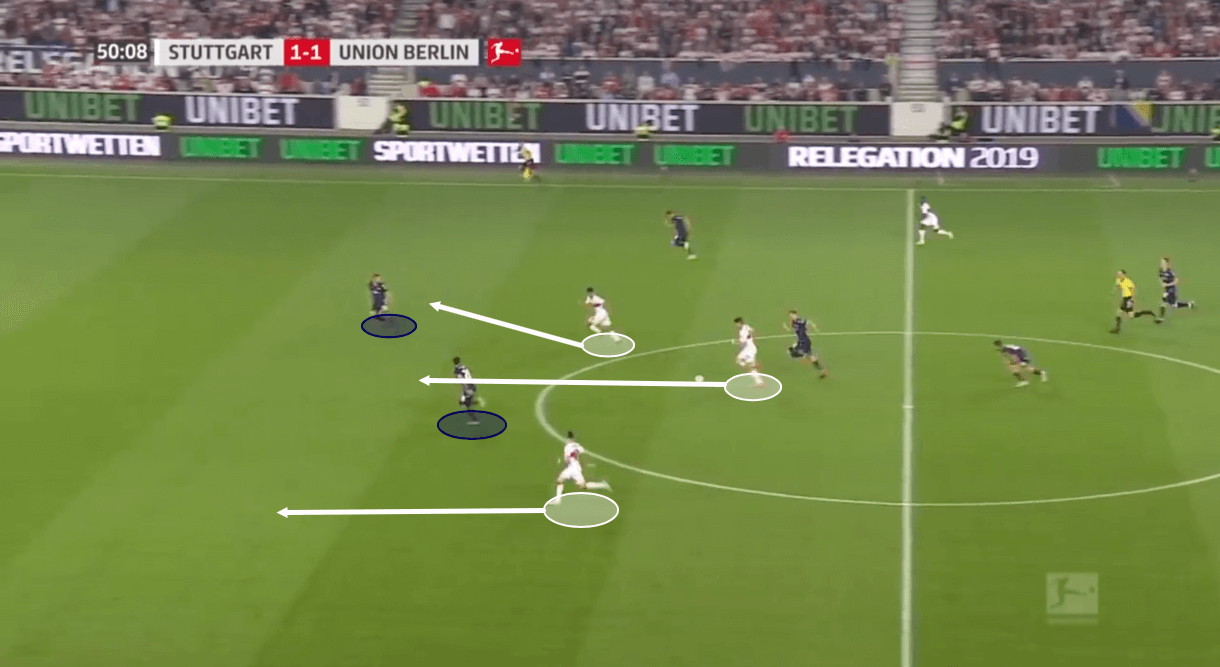
However, as stated, a majority of the time Fischer’s defence was excellent at controlling the opposition’s possession movements, even in the defensive third.
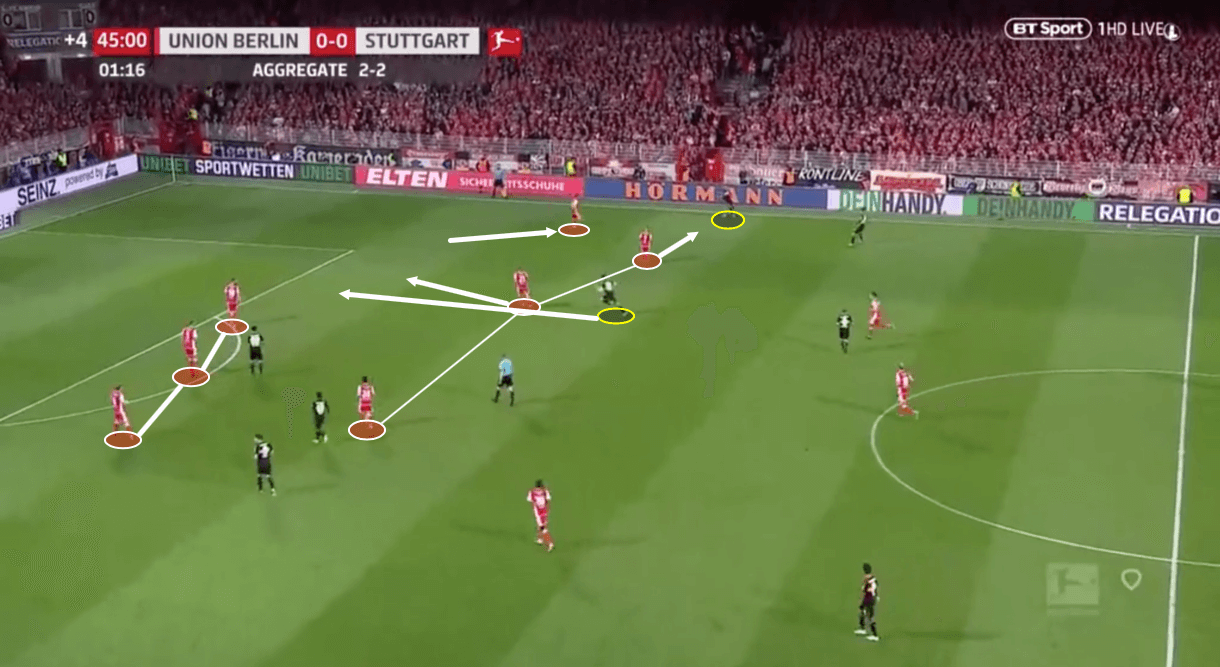
In the figure above, Union Berlin are situated in a low block but continue their pressing principles. With the ball shifted wide left, the wide left midfielder presses the ball, along with the left-back Ken Reichel. With the opposing central midfielder looking to move into the space behind Reichel, midfielder Prömel moves to block any potential pass from the possessor to said space. Stuttgart’s possession is suffocated, and Union Berlin successfully win back the ball here. This type of positional rotation is vital in a low block pressing system. Fischer gained the reputation last season as a skilled defensive tactician, and that could continue into the Bundesliga with this press.
Fast attack
Despite playing a high block in 2. Bundesliga, it wouldn’t be surprising to see Union Berlin shift to a medium block or even a low defensive block system as is typical of newly-promoted sides. If Fischer opts for this system, his team could combine familiarity with functionality and play a medium or low block with a front line press, which uses fast, vertical attacks to get forward and behind the high defensive lines.
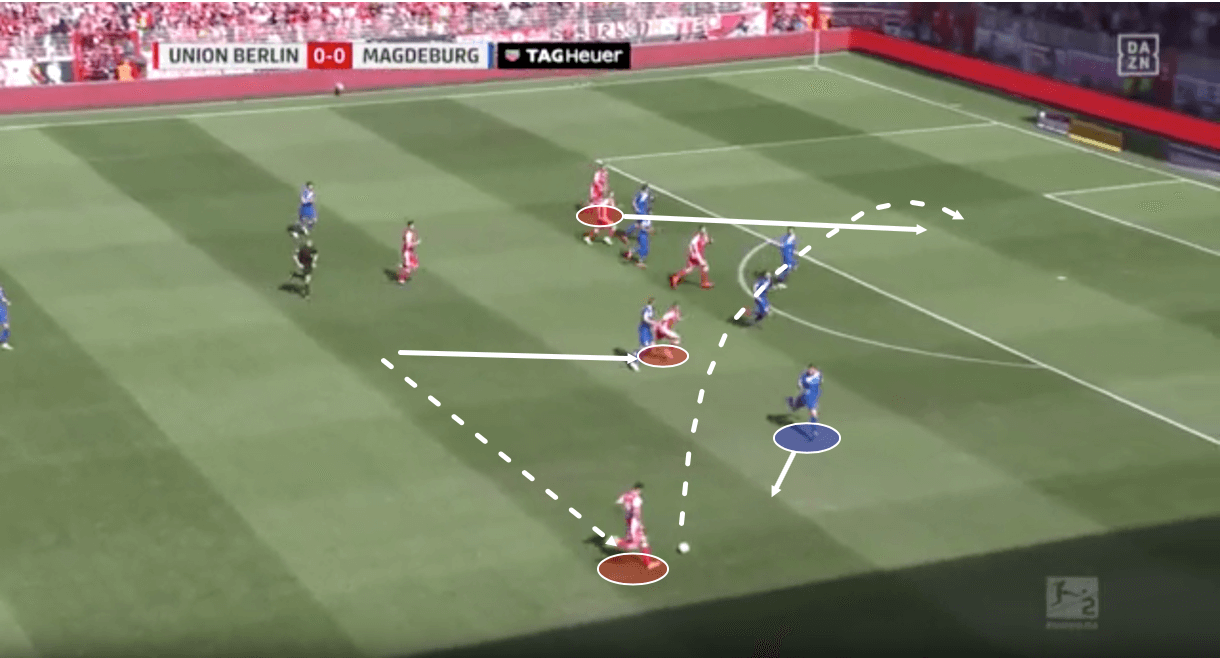
Union Berlin are already familiar with quick attacks in their high press. Here, after a press, the six attacking players move forward. The ball is played forward into the box, with runs made to shift the opposition as need be to create space.
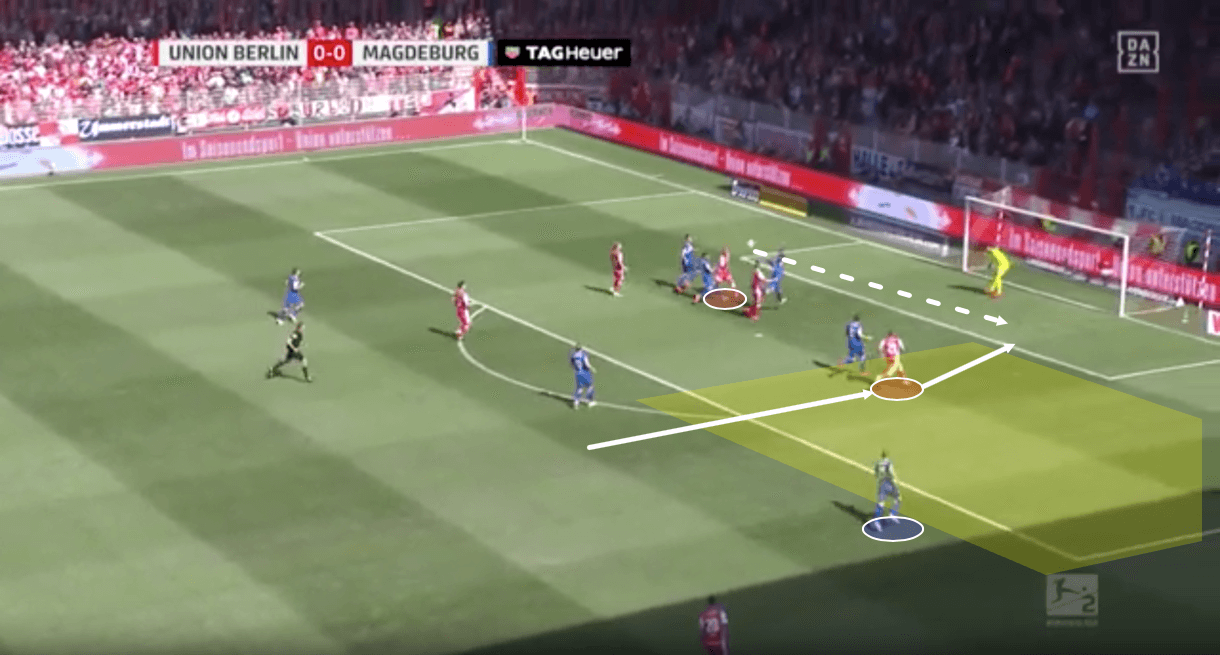
After receiving the long ball, a pass is made to the opposite side of the box, where the runner is now in a one on one situation.
As previously mentioned, a deeper defensive system could reassure the stability at the back while continuing this direct attacking style. A medium block setup would not be too dissimilar to Eddie Howe’s setup at Bournemouth. In possession in attack, quick assaults would not only be compatible with Union Berlin’s numbers-forward approach, but they could be beneficial to the system as a whole.
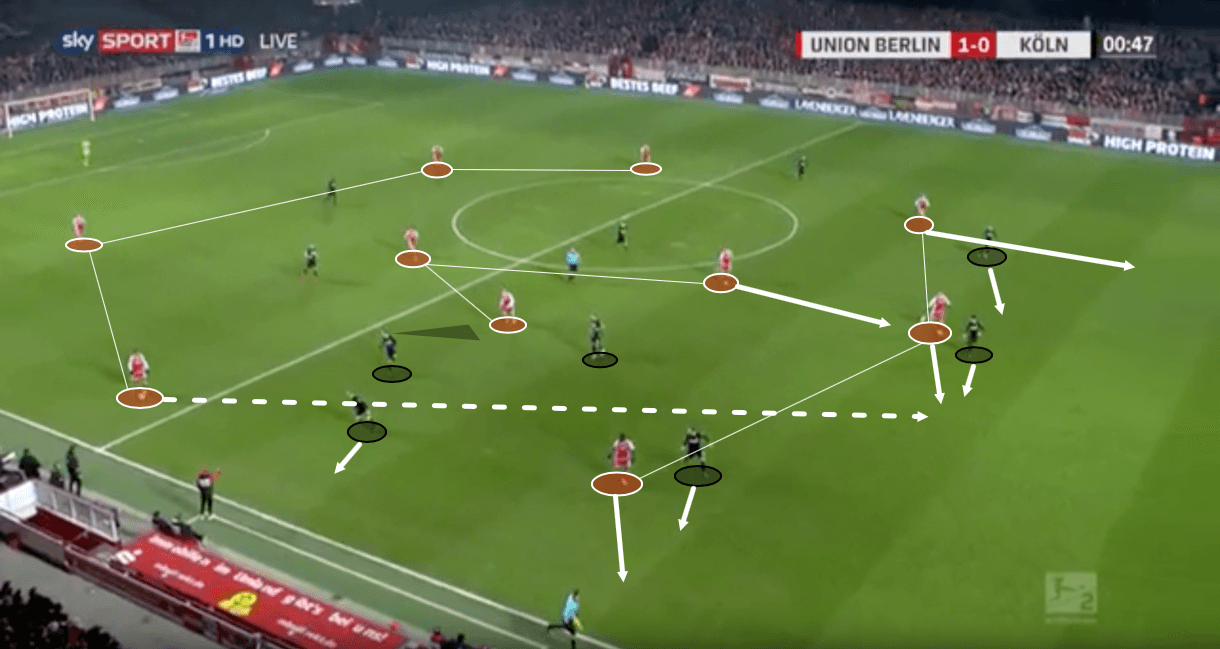
In this sequence, we see Union Berlin in their favoured formation. Right-winger Suleiman Abdullahi shifts wide down to the touchline. This moves not only his marker wide with him, but also the opposing player between him and the ball. Playing out of the back, this movement creates a passing lane forward from the right-back Christopher Trimmel to the striker Sebastian Polter, who has also shifted to the right into the opened space. Prömel and the left-winger also push forward.
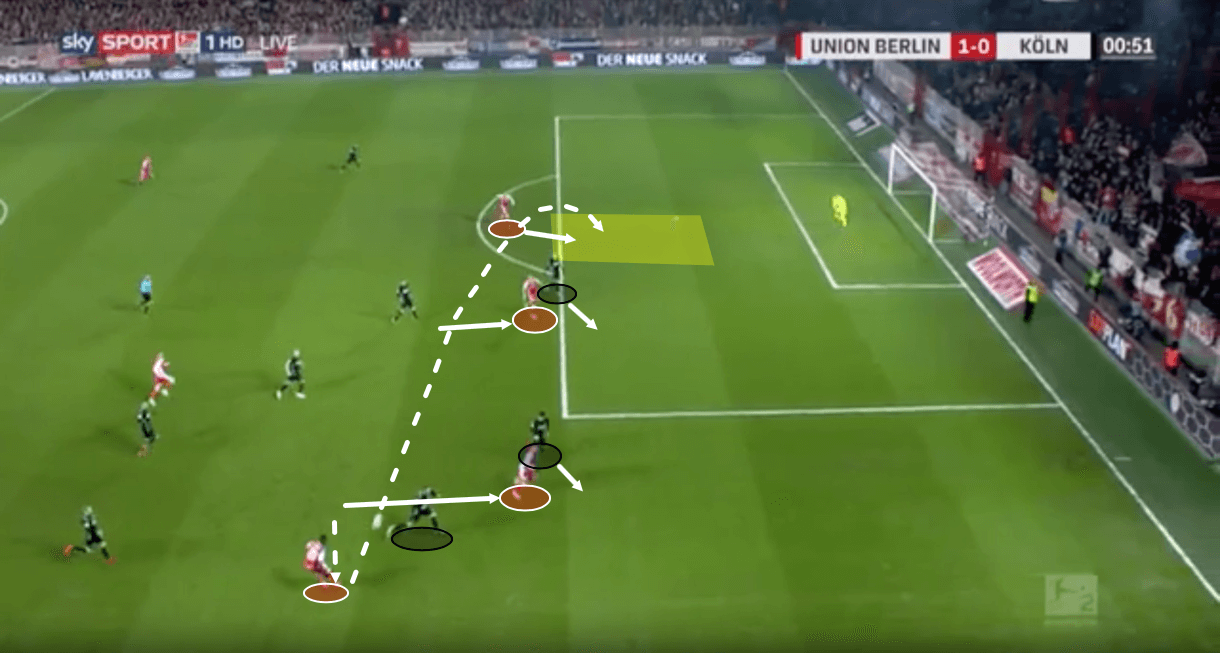
After the ball is played quickly to Abdullahi, the markers following Polter’s and Prömel’s movements result in the left-winger open in space centrally. This is an example of how Union Berlin frequently created space around defences last season.
In the Bundesliga, open spaces in and around the backline will be harder to come by. Yet even against superior opposition last season Union Berlin were able to create chances, the best example coming against Borussia Dortmund in the DFB Pokal.
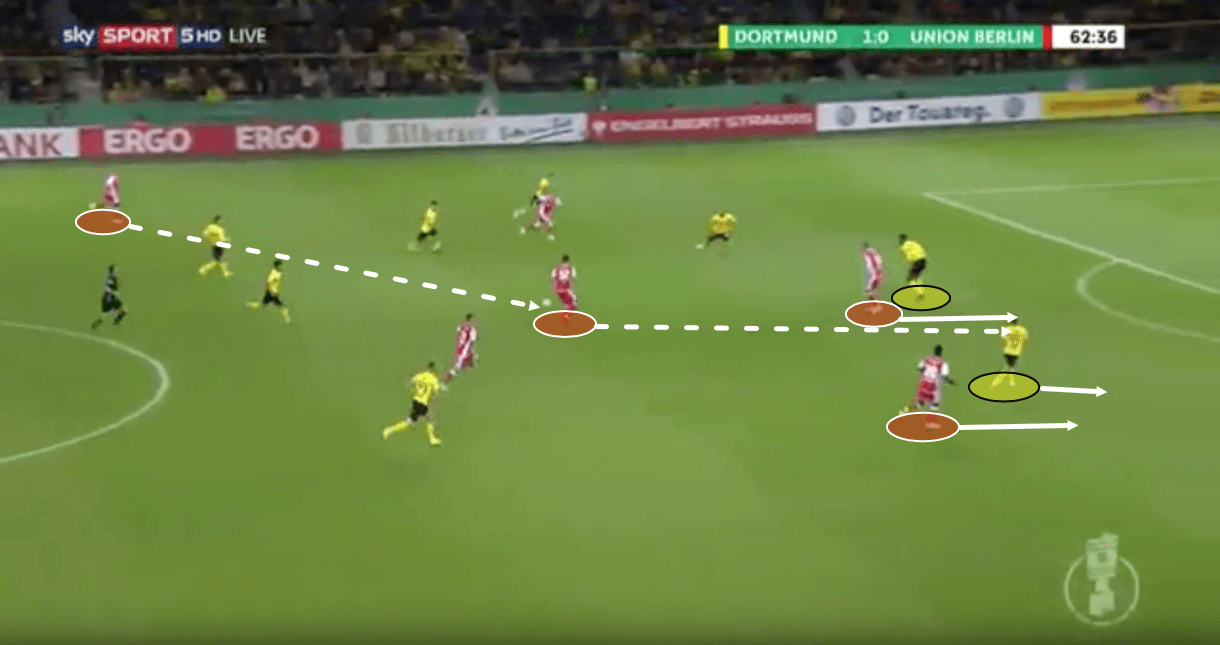
In the figure above, Union Berlin initiate a quick attack. Midfielder Robert Žulj receives the ball in space centrally. Abdullahi and Polter, who had both came on as substitutes a couple of minutes prior, move forward. Abdullahi does well to maintain his distance wide right away from the striker, allowing Polter to split the centre-backs centrally with a run. Žulj completes the sequence with a pass inside to Polter, who scores.
Key components
Additionally, Union Berlin have made moves in the transfer window which support this system. Firstly, the purchase of Abdullahi after his success with the club while on loan last season was somewhat obvious. The 22-year-old winger was frequently successful in creating space and unsettling opposing defenders, creating 0.34 big chances per 90 minutes, good for second-best in the club. Another key player returning from last season is centre-back Marvin Friedrich, who was a key commander among the backline
Striker Anthony Ujah can provide appropriate cover for Polter and team-leading scorer Sebastian Andersson through his Bundesliga experience – the Nigerian scored double-digit goals in consecutive 2014-15 and 2015-16 seasons for Köln and Werder Bremen respectively.
Veteran defender Neven Subotić has also joined Union Berlin. The two-time Bundesliga champion has returned to Germany after helping French club Saint-Etienne qualify for the Europa League last season. Subotić is a proven centre-back with a relative familiarity of pressing systems through playing in Jurgen Klopp’s successful Dortmund sides.
Conclusion
In 2004, Union Berlin supporters donated blood in a campaign to save their beloved club from bankruptcy. In 2008, thousands of fans volunteered to help rebuild and renovate their stadium. Now, they rejoin their rivals, Hertha Berlin, for the Berlin derby, for the first time in the top flight.
Urs Fischer and co. have a multitude of decisions to make upon analysis of their tactical system for the upcoming Bundesliga season. The high press and quick attack proved highly effective last season but could cause struggles defensively against superior opposition. A deeper block might parry this effect but could also limit the potency of the attack. As Union Berlin begin their debut season in the Bundesliga, their pressing tactics, along with their fervent supporters, will no doubt make them one to watch.

If you love tactical analysis, then you’ll love the digital magazines from totalfootballanalysis.com – a guaranteed 100+ pages of pure tactical analysis covering topics from the Premier League, Serie A, La Liga, Bundesliga and many, many more. Buy your copy of the July issue for just ₤4.99 here, or even better sign up for a ₤50 annual membership (12 monthly issues plus the annual review) right here.

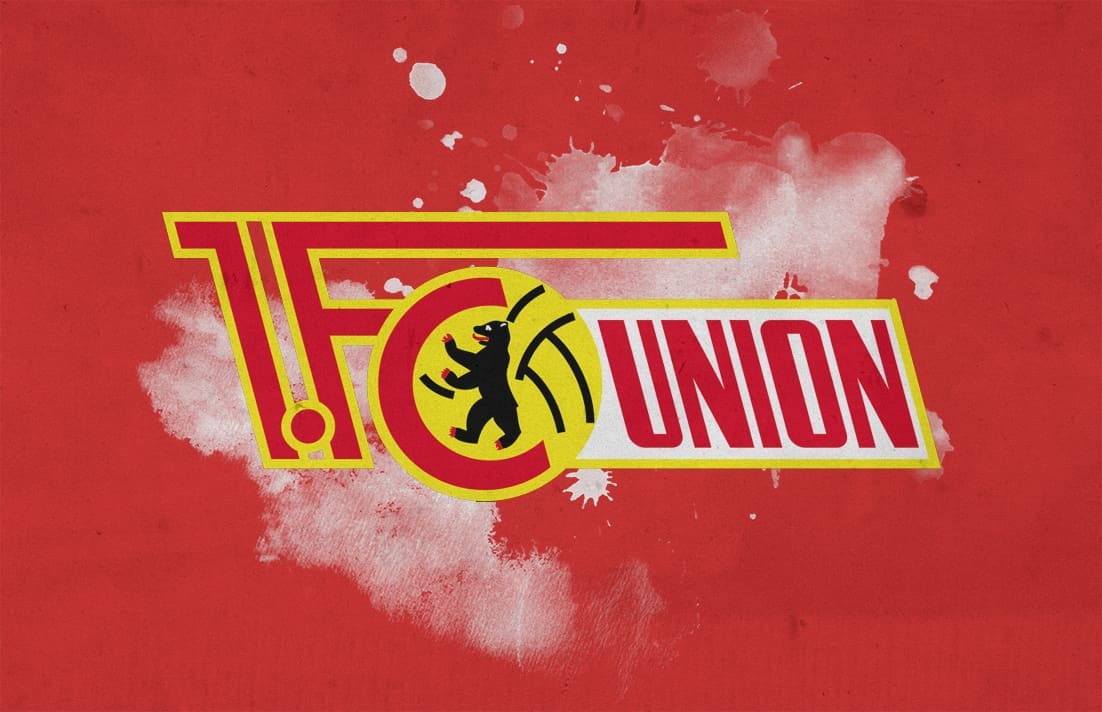



Comments